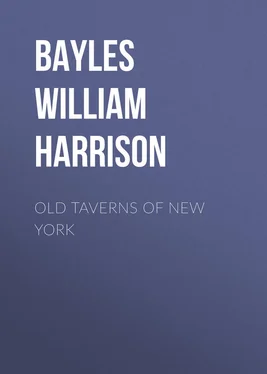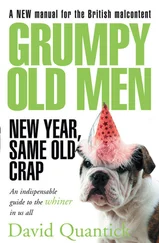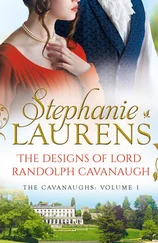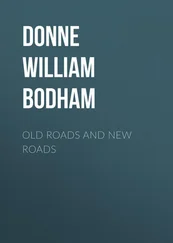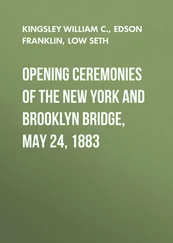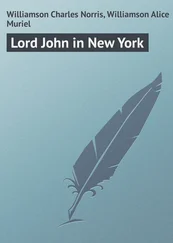William Bayles - Old Taverns of New York
Здесь есть возможность читать онлайн «William Bayles - Old Taverns of New York» — ознакомительный отрывок электронной книги совершенно бесплатно, а после прочтения отрывка купить полную версию. В некоторых случаях можно слушать аудио, скачать через торрент в формате fb2 и присутствует краткое содержание. Жанр: foreign_antique, foreign_prose, на английском языке. Описание произведения, (предисловие) а так же отзывы посетителей доступны на портале библиотеки ЛибКат.
- Название:Old Taverns of New York
- Автор:
- Жанр:
- Год:неизвестен
- ISBN:нет данных
- Рейтинг книги:3 / 5. Голосов: 1
-
Избранное:Добавить в избранное
- Отзывы:
-
Ваша оценка:
- 60
- 1
- 2
- 3
- 4
- 5
Old Taverns of New York: краткое содержание, описание и аннотация
Предлагаем к чтению аннотацию, описание, краткое содержание или предисловие (зависит от того, что написал сам автор книги «Old Taverns of New York»). Если вы не нашли необходимую информацию о книге — напишите в комментариях, мы постараемся отыскать её.
Old Taverns of New York — читать онлайн ознакомительный отрывок
Ниже представлен текст книги, разбитый по страницам. Система сохранения места последней прочитанной страницы, позволяет с удобством читать онлайн бесплатно книгу «Old Taverns of New York», без необходимости каждый раз заново искать на чём Вы остановились. Поставьте закладку, и сможете в любой момент перейти на страницу, на которой закончили чтение.
Интервал:
Закладка:
This door connecting the City Hall and the tavern was meant to serve, in its way, a very useful purpose, but lacking reliable data in reference to the part it played in facilitating communication between the tavern taproom and the halls of justice, we leave each reader to supply the deficiency by his own opinions on the subject.
It was a uniform custom in the English colonies to make provision for the care of strangers and to regulate by law the taverns and the sale of strong drink. By the duke’s laws, which were enacted, or rather accepted, by representatives of the people at the Hempstead convention, in 1665, inn-keepers were not allowed to charge “above eight pence a meal with small beer,” and were required to always have on hand a supply of “strong and wholesome” malted liquor.
In January, 1676, it was ordered that “all persons who keep publick houses shall sell beere as well as wyn and other liquors and keep lodgings for strangers.” It was proposed to the governor by the mayor and aldermen that six houses be appointed to sell “all sorts of wine, brandy and rum and lodgings,” and eight to “sell beere, syder, mum and rum and to provide for strangers as the law directs,” that two of “the wine houses be ordinaryes, and four of the beere-houses.” Prices were fixed at which the tapsters should sell. French wines and Madeira were from one and three pence to two shillings per quart; brandy at six pence and rum at three pence per gill; beer and cider were three and four pence per quart. In the ordinary at the wine house the meal was one shilling and in that at the beer house it was eight pence; lodging at the wine house was four pence per night, and at the beer house it was three pence. Thus a sharp distinction was drawn between the two classes of houses and there was in all probability as great a difference in their keepers.
Broad Street had become a desirable place of residence and many citizens of the better class made it their home. The canal or ditch through the middle of it, from the present Exchange Place to the river, would never have been there if New York had not been originally a Dutch town. Across the canal, near the river, between the present Stone and Bridge Streets, was a bridge. This was a favorite lounging place for idlers, where, leaning over the railing of the bridge, they could watch the ebb and flow of the tide and the various small boats which went a little way up the canal to discharge their cargoes of oysters, fish and country produce brought over from Long Island or other nearby points. It was the center of probably more stir and activity than any other place in the little city. Here the merchants had become accustomed to meet for trade and the transaction of business of various kinds. This induced Governor Lovelace, March 24, 1669-70, to issue an order establishing a sort of business exchange. This order specified that the meeting of the merchants should be between the hours of eleven and twelve on Friday mornings, at present near the bridge, and the mayor was directed to take care that they should not be disturbed. The time of meeting and dispersing was to be announced by the ringing of a bell. It was the beginning of the merchants’ exchange. This continued to be the meeting place of the merchants, and near this spot a building called the Exchange was subsequently built.
Not far away, on the present northwesterly corner of Broad and Pearl Streets, stood the tavern of James Matthews, who, besides keeping a tavern, was a merchant and a man of considerable means. The meeting place for merchants being almost in front of his door his house was a very convenient place for them to retire to, to consummate their bargains over a social glass. In 1678 and in 1685 he was one of the farmers of the excise. He died in the latter part of the year 1685, or early in 1686, and his widow continued to keep the house for about two years, when she also died. The executors of her estate petitioned, in March, 1688, for an abatement of £20 excise money.
In September, 1676, Abraham Corbett, “driven with his family from his home eastward of New England,” petitioned for a license to distill strong liquors, which was granted him. He became a lieutenant in the militia in 1684; and was one of the farmers of the excise in 1688, which indicates that he was a man of respectability and deserving of public confidence. He was also a tavern keeper. When Samuel Leete, clerk of the Court of Mayor and Aldermen, and an Alderman of the city, died in 1679, he left to Abraham Corbett, “all my household goods in part payment of what I owe him for meat and drink.” By Governor Dongan’s Charter of 1686, Abraham Corbett was appointed an Assistant Alderman. In 1680 he purchased for sixty pounds sterling a house and lot on the east side of Broadway, two or three doors south of the present Exchange Place, and some years later on this lot he erected a fine tavern, which he called the “Royal Oak,” where he spent his declining years in its management. Considering the position which Corbett held in the esteem of the people there is no doubt that his house received the patronage of the best class of the community.
In these early days there were no parks, but the open country was near at hand with all the charms of nature. Just south of the present Trinity Churchyard was the Governor’s Garden. A large gateway led to it and to a charming spot – a piece of elevated ground covered with natural forest – called the “Locust Trees,” which was a resort for those who enjoyed the open air, where they could look out on the broad expanse of the Hudson. It was not then covered with that panorama of moving craft which it now presents. It was the same majestic river as now, but its surface was unbroken except by a lonely canoe or a small sail or two lazily drifting up or down the stream, with the green shores of Staten Island and Pavonia in the distance.
The road along the East River, beyond the “water gate,” had a number of dwellings on its upper side. On the way to the ferry a road joined it called the “Maadge poadge,” or Maiden Lane, and a little way further another, the present John Street, led up to Vandercliff’s Orchard, which is said to have been a place of public resort, owned and kept by Dirck Vandercliff, who was also a merchant, and in 1687 was an assistant alderman.
A singular incident occurred at this place in 1682. James Graham, who was an alderman of the city in 1681, recorder in 1683, and afterwards attorney-general, had, according to evidence, expressed a desire to make the acquaintance of Captain Baxter, an English officer recently arrived in the Province, and accordingly a party of several friends, including Graham and Baxter, met at the tavern of Dirck Vandercliff in “The Orchard,” to spend a social afternoon and evening. About nine o’clock, as the company was about to break up, Graham, after paying the reckoning, was called aside by Baxter, but not out of the sight of the company. Those present saw Baxter act as if to kiss Graham, when the latter called out that he had been stabbed. He had been struck with a knife under the collar bone, the wound being about four inches deep. Baxter was arrested and bound over to await his trial in case of Graham’s death, but the wound did not prove to be mortal.
On the hillside at the present Chatham Square, near the Collect or fresh water pond and the sparkling stream that fed it with the purest water on Manhattan Island, in a charming retreat, then considered far beyond the city wall, stood the tavern of Wolfert Webber, built in the time of the Dutch, and for a long time the farthest outlying dwelling on the eastern side. We find in the record that in 1655, a daughter of Wolfert Webber, tavernkeeper, had been returned to him from her captivity among the Indians. Notwithstanding the danger from attacks of the Indians, Webber continued to keep this house, and it was probably patronized by people who wished to enjoy the pleasures of the quiet and beautiful spot where it was located. In the marshes or swamps to the northwest, called the Kripple Bush, the sportsman could, in season, find woodcock in abundance, or he could enjoy the more gentle sport of angling in the Collect. Although the eastern side of the Collect was very attractive, the western side, at one time, was the residence of the very poorest class of people, and, on account of the stagnant water of the nearby swamps, considered very unhealthy.
Читать дальшеИнтервал:
Закладка:
Похожие книги на «Old Taverns of New York»
Представляем Вашему вниманию похожие книги на «Old Taverns of New York» списком для выбора. Мы отобрали схожую по названию и смыслу литературу в надежде предоставить читателям больше вариантов отыскать новые, интересные, ещё непрочитанные произведения.
Обсуждение, отзывы о книге «Old Taverns of New York» и просто собственные мнения читателей. Оставьте ваши комментарии, напишите, что Вы думаете о произведении, его смысле или главных героях. Укажите что конкретно понравилось, а что нет, и почему Вы так считаете.
